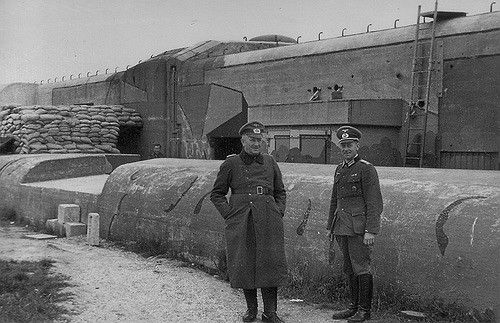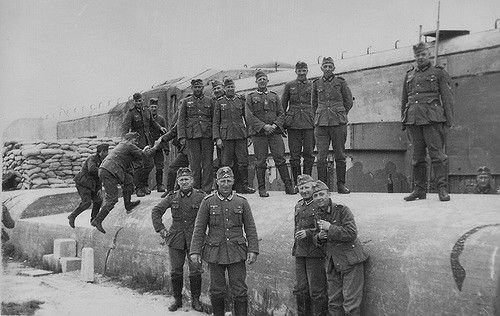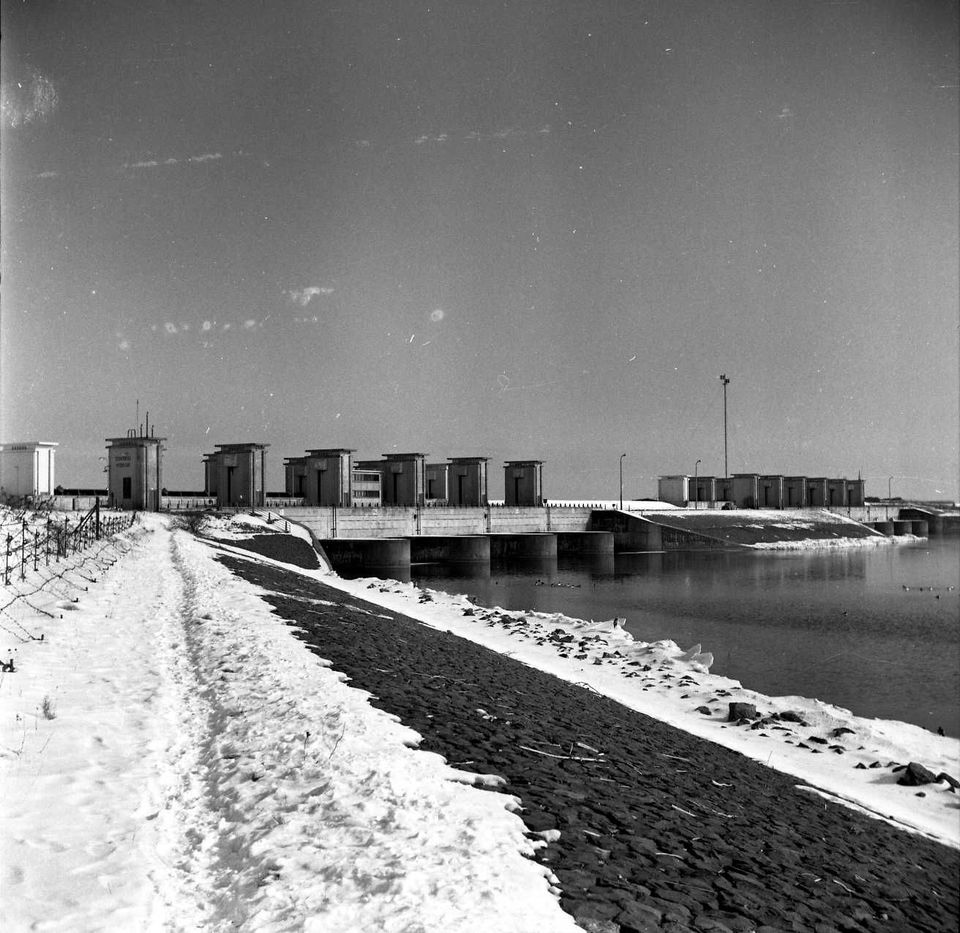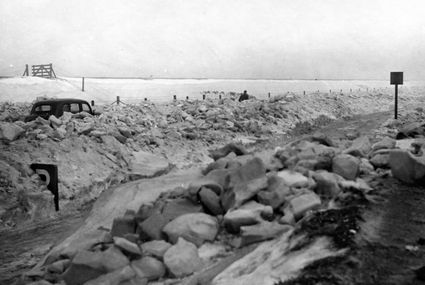Den Oever during the war years
Reading time: 4+ minutes
Long before the German invasion of the Netherlands, in May 1940, Den Oever already had several impressive bunkers which were part of the Atlantic Wall during WWII. They were built between 1932 and 1936 and were meant to deter any enemy troops from storming the Afsluitdijk. Though this did not amount to much as there was hardly any fighting in Den Oever during those days in May. And even under German occupation, things remained pretty calm on the North Holland side of the dike.
A 'hole' in the defence line
Reclamation, the plans for building the Afsluitdijk, finally realised between 1927 and 1932, stemmed from this ambition. But when the plans were still just a draft on paper, the then Dutch Minister of War saw real danger. The dike made a 'hole' in the Netherlands's defence line. Not only could well-willing citizens easily travel from Friesland to North Holland, enemy militaries also had easy access to Vesting Holland. They could march straight to Amsterdam. The route to the naval port in Den Helder would also be wide open. It was a serious dilemma.
Lock complexes
The ministry saw yet another danger. The plans for the Afsluitdijk included two lock complexes in Den Oever. The Stevinsluizen would have to regulate the water level in the IJsselmeer. The water level was essential for the inundations of both the Vesting Holland and the Grebbe Line as the flooding of strategic parts of the Netherlands was still a major defence weapon at that time. If the basin locks fell into enemy hands, that weapon could be used against the Netherlands.

Non-negotiable condition
Due to the risks, the Minister of War set a non-negotiable condition for the approval and construction of the Afsluitdijk. The dike could only be built if proper defence fortifications were built on both sides of the dike and if Water Management would bear the costs. That another government authority was going to pay for it was very advantageous to the army officials because the Ministry of War's budget had been under pressure since the 30s. This is how a solution was found to the Afsluidijk dilemma and how it would come to play a strategic role during the war years.
Bunkers and obstacles
The fortifications on the North Holland and Friesland side of the Afsluitdijk, Stelling Den Oever and Stelling Kornwerderzand, were built between 1932 and 1936. Stelling Den Oever consisted of sturdy bunkers with machine guns, artillery and obstacles on the dike to stop armoured vehicles. During the mobilisation, the fortifications were fortified with artillery in open batteries (artillery units) as well as anti-aircraft artillery. The bunkers at both fortifications were of exceptional quality for that time. They were the sturdiest the Dutch armed forces had ever built for defence.

The Robbenplaat
Thirteen casemates were built around the Stevinsluizen at Den Oever, where most of the water from the IJsselmeer was carried out to the Wadden Sea. The majority of them were built on the Robbenplaat, the dike's wide plateau on the eastern side of the lock complex. This plateau was built purely for military purposes. The casemates were for machine guns and cannons. The obstacles for armoured vehicles were placed on the eastern side of the casemates.
Mobilisation
During the mobilisation on 28 August 1939, the Dutch army reinforced Stelling Den Oever with two open naval batteries, one at the mouth of the harbour and one inside the fortification. However, during May of 1940, the fortification did not have a heroic role. That role was destined for Stelling Kornwerderzand, on the Frisian side of the dike. This was the only place in the Netherlands where the German Blitzkrieg was brought to a halt in May 1940. Den Oever could do nothing more than stand by and watch.
The commanding officer of Den Oever, Captain Kuiken, did write in his short report of the war days that aircraft flew over regularly. One of them landed in the IJsselmeer after being hit by a bullet. The pilot's hand was wounded and he was taken as a prisoner of war. Several German aircraft aimed their machine guns at the fortification and one even dropped a few bombs, which fortunately did not cause any major damage.

Occupation
During the occupation, the German military took over the fortification. Not much is known about their presence as there was hardly any fighting at Stelling Den Oever during the war. The German anti-aircraft artillery did come into action regularly against allied planes. The Allied Forces used the Afsluitdijk as an orientation point during flights to their targets in Germany. The German army left visible traces at the fortification in the form of several small, cement bunkers which served as foxholes. These German additions to Stelling Den Oever probably date from 1944 or later, when it became clear that the fortification would have to be defended against an allied invasion.
Liberation
Immediately after the war, the lock complex was a desolate sight. Before their retreat, the Germans destroyed the lock complexes' lifting equipment. This probably occurred at the same time they blew up the Wieringermeerdijk, on 17 April 1945, flooding Wieringermeer in just a couple of days. What the military goal of this was, is still unclear. Most likely revenge, because Wieringermeer was home to many people from the resistance or in hiding. Finally, thousands of German soldiers were forced to leave. The first march took them over the thirty-kilometre long Afsluitdijk to Friesland. Later, soldiers marched from all over the Netherlands to Den Helder, where they were then shipped to Wilhelmshaven or Bremerhaven.
All parts of the Stelling that were built before and during the war can still be found on each side of the Afsluitdijk. Covered by overgrown privet, they were very difficult to see for quite a long time.
Works are being carried out on the Afsluidijk in the coming years so it can continue to protect the Netherlands from rising sea levels. These works include making the casemates visible again, which means access is limited until then. If you want to see them, please go to De Afsluitdijk to see if they are accessible.
Visit Den Oever



